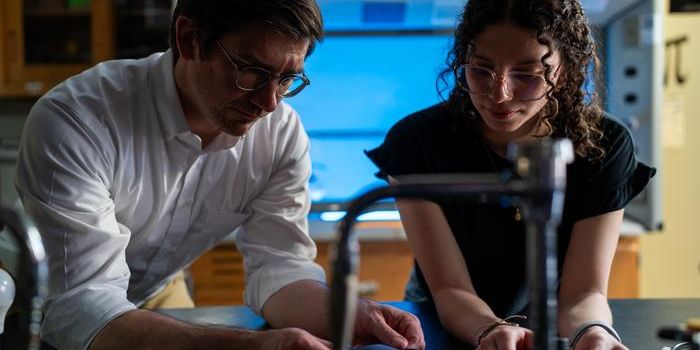This CO2 sensor was fabricated on a piece of paper
A carbon dioxide sensor developed by physicists at the University of Alberta can be manufactured on a mere piece of paper. The simplicity of this environmental innovation has myriad potential uses - from detecting CO2 levels in industries to our own homes. And because of its simplicity, it is so inexpensive that mass production is an achievable goal. The researchers hope that this accessibility will spread awareness about how much CO2 humans are emitting.
"You can basically think of it as a litmus paper for carbon dioxide," said co-author Al Meldrum, who is a professor in the Department of Physics. "The work showed that you can make a sensitive carbon dioxide detector out of a simple piece of paper. One could easily imagine mass produced sensors for carbon dioxide or other gases using the same basic methods."
The sensor is made of a fluorescent color-shift chromophore infused into filter paper. As the authors explain in the paper, the paper changes color based on the levels of CO2 in the air: “The emission color of the resulting fluorescent paper changes upon exposure to CO2 due to the formation of carbonic acid, which underlies the sensing mechanism. By using a ratiometric method, the undesirable effects of photobleaching can be eliminated, leading to a stable and repeatable sensor performance,” they write. “These multi-use sensors have a response time on the order of 1 min and feature low detection limits for a paper-based CO2 gas sensor, suggesting possible low-cost applications in smart buildings or other facilities in which CO2 levels are required to be continuously monitored.
The researchers acknowledge that their technology isn’t quite where it needs to be in order to be ready for mass production. Further design, optimization, and packaging will be required before the sensor will be ready for the masses.
"In smart buildings, carbon dioxide sensors can tell you about the occupancy and where people tend to congregate and spend their time, by detecting the carbon dioxide exhaled when we breathe," explained Meldrum. "This can help to aid in building usage and design. Carbon dioxide sensors currently can be very expensive if they are sensitive enough for many applications, so a cheap and mass-produced alternative could be beneficial for these applications," he concludes.









